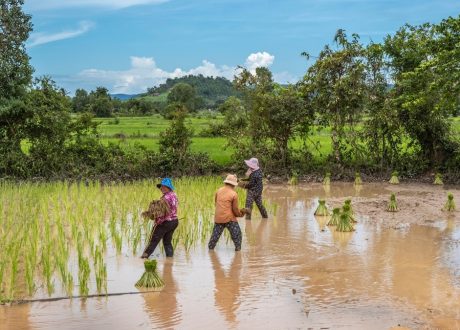
UNCTAD urges stronger action to help least developed nations tap into carbon markets
The United Nations Trade and Development (UNCTAD) urged during the 29th United Nations Climate Change ...

The US contributed $20 million to the Food and Agriculture Organization of the United Nations (FAO) to fast track an impact-oriented project in Central America and in sub-Saharan Africa for digital soil nutrient mapping.
This type of soil mapping can improve the efficiency in the use of fertilizers and help to boost food security and nutrition.
“This contribution is timely and allows us to scale up the use of soil mapping in regions where it is most needed and where we are seeing a decline in fertilizer use due to price hikes,” stated QU Dongyu, FAO Director-General, as he welcomed the investment. “By understanding what nutrients our soils and crops need, we will reduce waste when applying fertilizers and increase their effectiveness.”
Ambassador Cindy McCain, US Permanent Representative to FAO and the Rome-based UN agencies, announced the contribution during a week-long field visit to Guatemala and Honduras. The funds will help tackle what she called an unparalleled global food crisis and address both immediate and long-term needs many countries are facing due to skyrocketing food and fertilizer prices. The impacts of the climate crisis, such as frequent droughts, floods and high temperatures also put food security and nutrition at risk. Managing soils sustainably to increase resilience and adapt to these changes is essential and must be based on informed decisions and continuous monitoring of soil health.
The funding will be primarily used to conduct targeted soil nutrient mapping to systematize and improve the existing soil maps in Guatemala and Honduras, as well as in other countries in Central America and sub-Saharan Africa, where Ambassador McCain noted FAO has proven experience in building capacity and digitizing soil maps, which have fast, positive impacts on crop yields and sustainability.
FAO has already been supporting the scaling up of a pioneering project in Ethiopia, where agriculture – almost all of it practiced by smallholders – accounts for 40 percent of value-added economic activity and employs more than 80 percent of the population. That project used digital soil nutrient mapping technologies to generate timely information, particularly on how to optimize fertilizer use, and has already led to yield and availability increases of high-quality grains in the country.
Fostering the creation of national soil databases and soil information systems as public goods to be used by policymakers, the private sector and especially farmers can generate long-term benefits, as well as improve short-term flexibility to adapt to trends in fertilizer markets and climate dynamics without compromising output.
The United Nations Trade and Development (UNCTAD) urged during the 29th United Nations Climate Change ...
About 140 oil and gas companies have committed to credibly measuring and reducing methane emissions ...
Egypt’s Minister Rania Mashat has witnessed the launch of two international initiatives on sustainable energy ...


اترك تعليقا